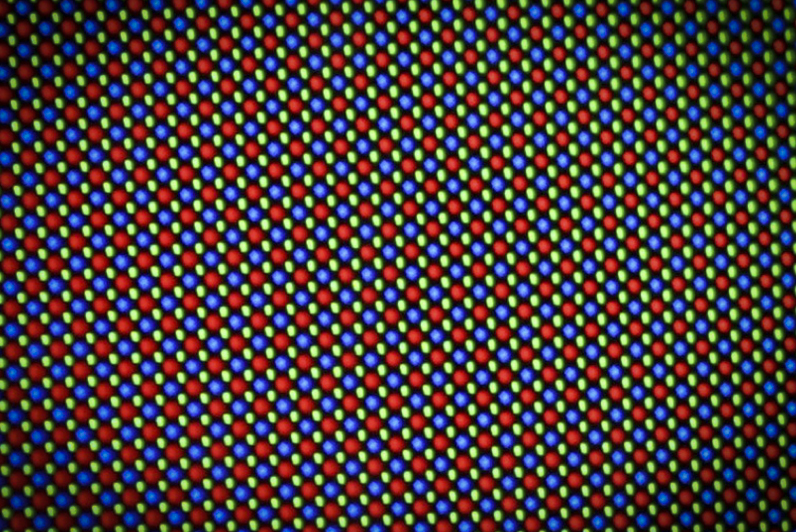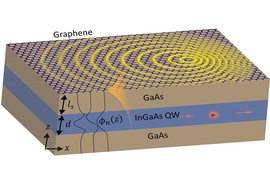Researchers from the Low Energy Electronic Systems (LEES) interdisciplinary research group at Singapore-MIT Alliance for Research and Technology (SMART), MIT’s research enterprise in Singapore, together with MIT and National University of Singapore (NUS), have found a method to quantify the distribution of compositional fluctuations in the indium gallium nitride (InGaN) quantum wells at different indium concentrations.
InGaN light emitting diodes (LEDs) have revolutionized the field of solid-state lighting due to their high efficiencies and durability, and low costs. The color of the LED emission can be changed by varying the indium concentration in the InGaN compound, giving InGaN LEDs the potential to cover the entire visible spectrum. InGaN LEDs with relatively low amounts of indium compared to gallium, such as the blue, green, and cyan LEDs, have enjoyed significant commercial success for communication, industry, and automotive applications. However, LEDs with higher indium concentrations, such as red and amber LEDs, suffer from a drop in efficiency with the increasing amount of indium.
Currently, red and amber LEDs are made using aluminum indium gallium phosphide (AlInGaP) instead of InGaN due to InGaN’s poor performance in the red and amber spectrum caused by the efficiency drop. Understanding and overcoming the efficiency drop is the first step toward developing InGaN LEDs covering the whole visible spectrum, which would significantly reduce production costs.
In a paper titled “Unlocking the origin of compositional fluctuations in InGaN light emitting diodes,” recently published in Physical Review Materials, the team employed a multifaceted method to understand the origin of compositional fluctuations and their potential effect on the efficiency of InGaN LEDs. The accurate determination of compositional fluctuations is critical to understanding their role in reducing efficiency in InGaN LEDs with higher indium compositions.
“The [origin of the] efficiency drop experienced in higher indium concentration InGaN LEDs is still unknown to this date,” says co-author Professor Silvija Gradecak of the Department of Materials Science and Engineering at NUS, who is also a principal investigator at SMART LEES and a visiting professor at MIT. “It is important to understand this efficiency drop to create solutions that will be able to overcome it. In order to do so, we have designed a method that is able to detect and study the compositional fluctuations in the InGaN quantum wells to determine its role in the efficiency drop.”
The researchers developed a multifaceted method to detect indium compositional fluctuations in the InGaN quantum wells using synergistic investigation that combines complementary computational methods, advanced atomic-scale characterization, and autonomous algorithms for image processing.
Tara Mishra, lead author and SMART PhD fellow, says, “This method developed and used in our research is of general applicability and can be adapted to other materials science investigations where compositional fluctuations need to be investigated.”
“The method that we developed can be widely applied and provide significant value and impact on other materials science studies, where atomistic compositional fluctuations play an important role in material performance,” says Pieremanuele Canepa, co-author of the paper, principal investigator at SMART LEES, assistant professor in the departments of Materials Science and Engineering and Chemical and Biomolecular Engineering at NUS, and a former MIT postdoc. “The understanding of the atomic distribution of InGaN at varying indium concentrations is key to developing next-generation full-color displays using the InGaN LED platform.”
The research found that the indium atoms are randomly distributed in a relatively low-indium content InGaN. On the other hand, partial phase separation is observed in higher indium content InGaN, where random compositional fluctuations are concurrent with pockets of indium-rich regions.
The findings advanced the understanding of the atomic microstructure of the InGaN and its potential effect on the performance of LEDs, paving the way for future research to determine the role of compositional fluctuations in the new generation of InGaN LEDs and design strategies to prevent the degradation of these devices.
The research was carried out by SMART and supported by the National Research Foundation Singapore under its Campus for Research Excellence And Technological Enterprise (CREATE) program.
SMART’s LEES interdisciplinary research group is creating new integrated circuit technologies that result in increased functionality, lower power consumption, and higher performance for electronic systems. These integrated circuits of the future will impact applications in wireless communications, power electronics, LED lighting, and displays. LEES has a vertically integrated research team possessing expertise in materials, devices, and circuits, comprising multiple individuals with professional experience within the semiconductor industry. This ensures that the research is targeted to meet the needs of the semiconductor industry both within Singapore and globally.
SMART was established by MIT in partnership with the NRF in 2007. SMART is the first entity in CREATE developed by NRF. SMART serves as an intellectual and innovation hub for research interactions between MIT and Singapore, undertaking cutting-edge research projects in areas of interest to both Singapore and MIT. SMART currently comprises an Innovation Center and five interdisciplinary research groups: Antimicrobial Resistance, Critical Analytics for Manufacturing Personalized-Medicine, Disruptive and Sustainable Technologies for Agricultural Precision, Future Urban Mobility, and LEES.








